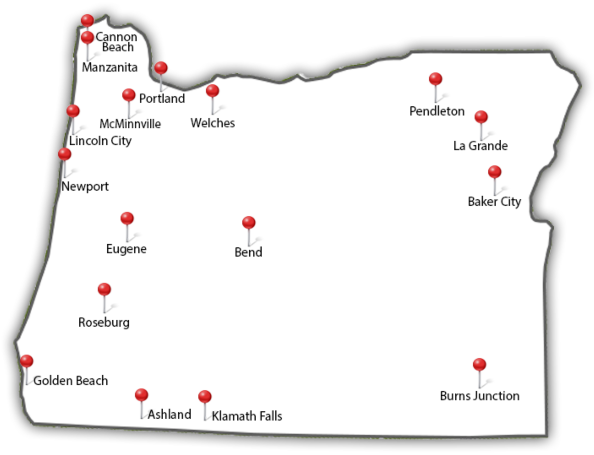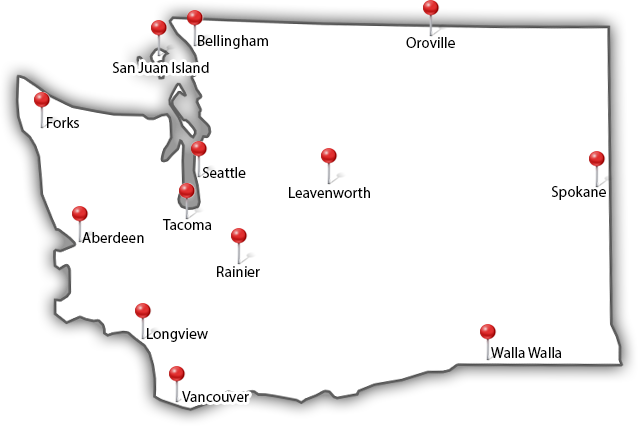Archive for the ‘Landscaping’ Category
Thursday, August 7th, 2014
Every year, with more drought and rising temperatures, we are experiencing more wildfires. Wildfire can spread unexpectedly to tens of thousands of acres in a matter of hours, leaving homeowners with little time to prepare their property for the oncoming disaster.
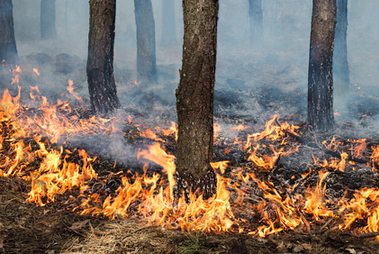 Yet there are several simple steps that you can take to prepare your home and property to withstand raging wildfires. Careful planning and yearly maintenance could mean the difference between a singed yard and a completely destroyed home and property.
Yet there are several simple steps that you can take to prepare your home and property to withstand raging wildfires. Careful planning and yearly maintenance could mean the difference between a singed yard and a completely destroyed home and property.
This post will teach you how to create a fire resistant landscape around your home to help protect your property from wildfires.
Defensible Space
Defensible space is “the natural and landscaped area around a structure that has been maintained and designed to reduce fire danger.”
According to the USFA, “Dead trees and shrubs surrounding your home act as fuel for fire.” Creating a buffer or safe zone around your home free of flammable vegetation can help stop a fire from burning close to your house.
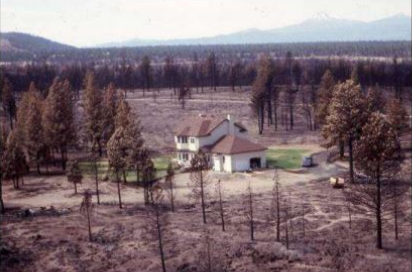
Image: OSU Extension Services
Removing dead trees, shrubs, excess leaves, and grass clippings within at least 30 feet of your home will greatly reduce fuel for a fire. Prune away branches that are very close to your home, as well as, any low hanging branches that can easily ignite in a brush fire.
Incorporating a firebreaks is also another great way to create defensible space. A ‘fire break’ is a landscape feature that can stop the advancement of a fire. Common fire breaks can be; stone walls, gravel paths, swimming pools, driveways, and even well maintained lawns.
Every home in an area prone to wildfire should create a defensible space plan for the property.
Fire-resistant plants
No plant is fire-proof, but some plants that have higher moisture levels and low sap content are much less likely to ignite during a fire.
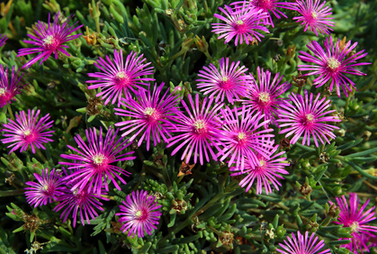
Iceplant
Hardwood trees like cherry, maple, and poplar are much less flammable than conifers like pine and fir. Planting turf grasses, shrubs and ground cover within a 30-foot area around your home can help stop fire from burning close to your home. OSU Extension Services recommends planting shrubs that are “low-growing with minimal dead material.” Other landscape plants that readily resist ignition are rockrose, iceplant (pictured right), and aloe.
Read this article from the OSU Extension Service on Landscaping With Fire-Resistant Plants for a more complete list of fire-resistant landscaping and how to properly plan a fire-resistant landscape.
Maintain Your Property
Creating a defensible space and planting fire-resistant plants are both very important aspects of protecting your home from wildfire. But without consistent maintenance, much of your hard work and planning might still not be enough to stop a raging wildfire.
Make sure to consistently prune and water your landscape. Keeping your plants healthy and green, even during the dry season, will lower their chances of burning. Also, keeping flammable materials like gasoline and firewood stored in metal containers or sheds at least 30 feet from your home can remove much of the potential fuel for a fire.
Creating and carrying out a fire plan for you home and landscape is incredibly important. With planning and maintenance, you can save yourself immense heartache and expensive restoration by avoid the dangers of wildfire.
Hiring an ISA Certified Arborist® and master gardener to help you plan and install your landscaping will help ensure that you use the latest techniques and receive expert advice when making your fire plan. The professionals at Northwest Arbor Culture, Inc. can help you protect your home from fire while creating a beautiful landscape for you to live in. Contact us today for all of your tree and landscaping needs.
Have you prepared your home for the threat of wildfires? Tell us how you are protecting your home in the comments section.
Monday, July 14th, 2014
Trees can add a lot of value and beauty to any property. They are fairly easy to plant and are relatively low maintenance. But, there are some important things that you can do for your tree to keep them happy and healthy.
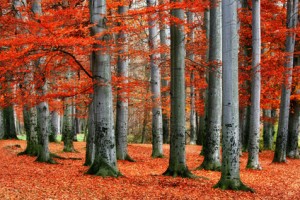 One easy step you can take to keep your trees healthy and looking sharp is to mulch around the base of your trees.
One easy step you can take to keep your trees healthy and looking sharp is to mulch around the base of your trees.
When trees grow naturally in forests they drop leaves and needles which matt together and form a protective barrier over the soil, eventually decomposing and providing nutrients to the soil. Mulching is a quick and inexpensive way to simulate a tree’s natural environment and help protect and feed it. But if done incorrectly mulching can actually injure and even kill a young tree.
Read this post to learn why you should mulch your trees and how to properly apply mulch to keep your trees healthy.
Why Should You Mulch Your Tree
Trees have very complex root systems that provide nearly all of the water and nutrients for the tree. Yet while some roots travel deep into the ground, the vast majority of a tree’s roots are located within the top three feet of soil around the drip line of the tree.
Because these roots are so shallow, they are more susceptible to changes in the heat, moisture, and nutrients within the soil. That’s why mulching can be so important to protect and feed the trees roots around it.
Mulching helps:
– Retains moisture and reduces drying soil
– Suppresses weeds from growing around the tree
– Prevents damage from mechanical equipment like weed whackers and lawn mowers
– Regulates soil temperature by providing insulation above the soil
– Provides valuable nutrients directly onto the soil as the mulch decomposes
It is clear that mulching is very beneficial in keeping a tree and its’ roots happy and healthy.
What Types of Mulch to Use
There is no perfect mulch to use. Each climate and situation can benefit from different types of mulch. But there are some basics rules that can be helpful when choosing a mulch for your tree.
Try to stay away from inorganic materials like plastic and shredded rubber. Their inability to absorb moisture and propensity to trap heat can actually scorch the delicate roots of a tree.
Bark mulch and wood chips can provide a very beautiful looking, long lasting mulch that helps protect the soil. Especially if you’ve recently had a stump ground somewhere on your property, wood chips can be a readily available and inexpensive mulch.
But a major downside to these types of mulches are their lack of nutrients. Being high in carbon and low in nitrogen can make them break down very slowly and deplete some nutrients in the soil that would otherwise be going to the tree.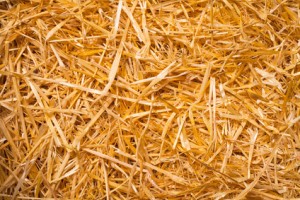
Straw and hay make decent mulch but tend to break down very rapidly and aren’t as aesthetically pleasing as other materials.
These mulches are usually utilized by vegetable gardeners where a shorter term mulch is required.
Organic compost is a decent mulch. It contains all of the essential nutrients, as well as, beneficial worms and microorganisms that can help the tree and soil stay healthy. If using homemade compost, make sure that it is broken down completely before applying to your trees. Also, compost tends not to stop the growth of unwanted weeds as well as other types of mulch.
Grass clippings are cheap and easy but tend to pack down very tightly and inhibit air flow to the soil. Though, some grass mixed with other mulch materials like leaves can still be a good addition.
Leaves can make some of the best mulch. They are readily available, free, and are the closest to mimicking the natural mulching a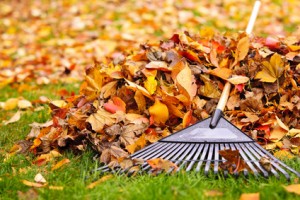 tree would create in the forest. Leaves can be chopped or ground down and watered to pack them into a neater looking mulch that won’t blow away.
tree would create in the forest. Leaves can be chopped or ground down and watered to pack them into a neater looking mulch that won’t blow away.
Now that we know about the ups and downs of different mulch, let’s discuss how and when to properly apply your mulch.
How To Apply Tree Mulch
Mulch should be applied to the ground around the tree in a circular shape. This ring around the tree should be about as large as the circumference of the canopy or ‘drip line’ of the tree. This ensures that the majority of the water that is diverted by the leaves and drips onto the ground is absorbed by the mulch and soil. Also, protecting the main area of feeder roots that are located directly under the canopy of the tree.
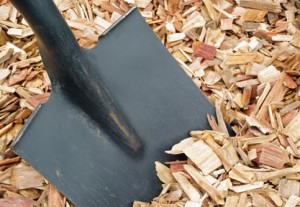 When piling the mulch under the tree, make sure that the mulch layer is only two to four inches thick. Any thicker and you risk limiting the oxygen and nutrient flow to the roots of the tree.
When piling the mulch under the tree, make sure that the mulch layer is only two to four inches thick. Any thicker and you risk limiting the oxygen and nutrient flow to the roots of the tree.
Mulch should not be applied directly to the trunk of the tree, as well as, the ‘flare’ or sloping roots of the tree traveling from the trunk. Mulch directly on the trunk and bare roots can create decay and encourage the growth of pests and disease.
When To Mulch
The type of mulch you use and how quickly it tends to degrade can affect how often you will want to mulch your trees. But as a general rule, mulching annually in the spring is a good idea. Adding mulch before extreme temperatures and dryness occurs can help protect your tree and soil before any damage occurs.
Also, mulching after any tree injury like a broken branch or after trimming can be a good boost of nutrients and protection to help after the stressful incident.
Mulching young trees or saplings in the late fall can also protect the roots from cold and freezing during the winter.
Make Sure To Mulch
Now that you know how easy and beneficial mulching can be make sure to mulch your trees every year. Mulching will keep your trees healthy and your landscape looking sharp.
If you ever have any questions about what type of mulch to use or when to mulch your trees, feel free to contact the experts at Northwest Arbor Culture Inc. Our Certified Arborists and Master Gardeners have over 30 years of experience caring for trees and landscapes in the Pacific Northwest. We have the knowledge and expertise to help you with any tree care needs.
Have you mulched your plants and trees? We would love to hear about what materials and methods you use to mulch in the comments section below.
Saturday, June 28th, 2014
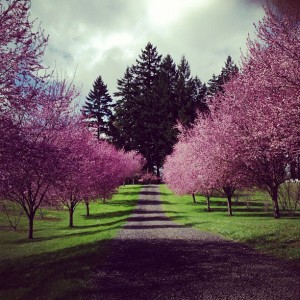
Beautiful trees can add a lot to the value and look of your property. On the same token, trees that aren’t well cared for can detract from the value of your property and actually create a risk for property damage and personal injury.
When you choose an arborist you’re making an investment in the entire value and safety of you and your property.
There are many tree trimming services out there, with many different prices and business models. What’s the difference between all of them and what makes one better than the other?
This article will outline what it means to be a Certified Arborist and why you should always hire a Certified Arborist for all of your tree care needs.
What is a Certified Arborist:
A Certified Arborist is a Tree Care Professional who is certified by the International Society of Arboriculture (The ISA).
Defined by the ISA, Certified Arborists are individuals “who have achieved a level of knowledge in the art and science of tree care through experience and by passing a comprehensive examination developed by some of the nation’s leading experts on tree care.”
What Does It Take To Become a Certified Arborist?
The ISA is an organization formed to ensure that arborists are adhering to the most recent and strict tree care and safety methods. This not only ensures the safety of you and your property, but for the worker as well.
Becoming a Certified Arborist doesn’t just mean that the professional has passed a test when beginning their career. To be a Certified Arborist one must constantly participate in continuing education. Always learning the most recent tree care methods. Renewing their certification every three years.
Being a Certified Arborist means that the professional is always keeping up on the latest safety standards and equipment maintenance protocols. Knowing how to properly use and repair their equipment. Ensuring that your trees are cared for properly and that the worker is properly insured and practices safety at all times.
Does Experience Replace ISA Certification?
Just because a professional has years of experience trimming trees, it doesn’t mean that they are actually practicing correct tree care methods.
Many common historical practices like wound dressing and tree topping are actually quite ineffective and even harmful to trees.
Staying up-to-date on tree infections, pests, equipment safety, roping and climbing practices, aerial rescue methods, tree care science, etc. are all crucial aspects of tree care that are constantly changing and being updated.
Hiring an ISA Certified Arborist means that you will receive the most current tree care methods available from a professional who knows.
High Quality Services:
When you hire a Certified Arborist you know you are employing someone who cares about their business. A professional who takes the time to stay certified and always learn more about their craft.
If you are looking for cut-rate bids on tree care services, chances are, you will get cut rate services. Possibly leading to damaged trees and more costs down the road in repairs and maintenance.
But when you find a Certified Arborists who takes the time to stay trained and up-to-date. Always maintaining their equipment and certifications. You can rest easy knowing that you are making an investment in the long-term health of your trees. In turn investing in the value and safety of your property.
It pays to hire a Certified Arborist.
Where Can I Find a Certified Arborist?
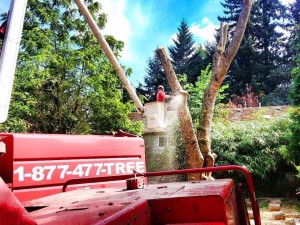 You can always look directly on the ISA website to find a Certified Arborist in your area, as well as, check on a specific Certified Arborist’s credentials.
You can always look directly on the ISA website to find a Certified Arborist in your area, as well as, check on a specific Certified Arborist’s credentials.
If you live in the Pacific Northwest you can contact Northwest Arbor Culture Inc. for all of your tree care needs.
Our professional Certified Arborists have over 30 years of experience caring for trees and provide the highest quality arborist services in the Northwest.
Tuesday, May 20th, 2014
Bugs play a very important role in the health of your trees and garden.
Pollinators, like bees and butterflies, allow the plants around your home to flower and produce fruit. Ground beetles eat vegetable munching slugs and snails in your garden. Spiders help reduce the population of disease spreading mosquitoes and flies.
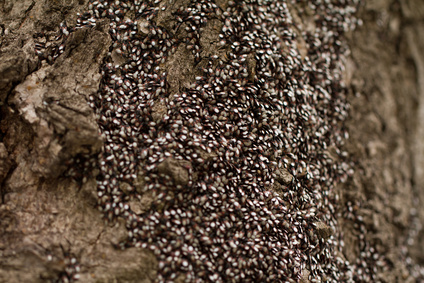 While bugs can be beneficial to our fruit trees and gardens, there are also many critters that can cause extensive damage and death to your plants.
While bugs can be beneficial to our fruit trees and gardens, there are also many critters that can cause extensive damage and death to your plants.
This article will educate you about several common plant pests of the Pacific Northwest. We will help you identify some of the symptoms of harmful infestations. Reviewing the steps you can take to defend your garden and landscape from pest damage.
Aphids
Aphids are one of the most common plant pests. They suck the sap from trees and plants causing the leaves to curl and die. Aphids also release excess sap from their bodies often causing plants to mold.
These frequent bugs come in several different colors and can affect any plant from roses to hardwood trees. Their bodies are usually 1/10th of an inch long and are easy to spot on the leaves and stem of your plants. Aphids have a short reproductive period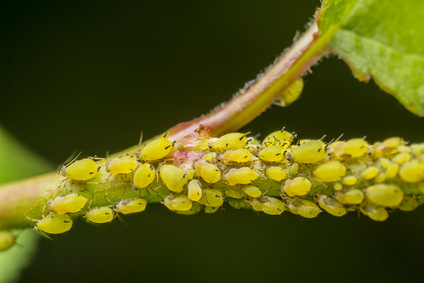 (10-14 days) and a population can explode in no time.
(10-14 days) and a population can explode in no time.
But how can you hope to control an Aphid outburst in your yard?
Treatment – A small infestation can be wiped away with a cloth or blasted off with a garden hose. Sprays made of household soap and water or garlic oil can help prevent aphid growth as well. Avoid insecticides that can kill helpful bugs in your garden.
Spider Mites
Spider Mites are tiny mites that feed on the leaves of many different plants. With eight legs and miniature bodies, they pierce the protective surface of leaves and create tiny holes. The plant then loses water through the open holes causing the leaves to dry out and die.
These bugs are so tiny that the best way to detect them is by holding a piece of white paper under the suspected infestation. After gently tapping on the leaf or branch you will be able to see tiny black flecks that are moving on the paper.
Spider Mites can infest indoor and outdoor plants of all kinds. In the Northwest, Spruce Spider Mites are can be found on many of our common conifer trees like Doug-fir, pine and spruce. Also infesting arborvitae and other common ornamental shrubs.
Treatment – Similar to Aphids spider mites can be hosed off of plants and sprayed with a soapy water mix. Spruce Spider Mites require an addition application of ‘horticultural oil’ to kill eggs surviving through the winter.
Insect Borers
Common insect borers include the Asian Longhorned Beetle and the Bronze Birch Borer. This type of large bug tunnels into the trunk and branches of plants and trees. Often attacking hardwood trees such as maples, ash, and elm. The bugs then lay eggs in their tunnels effectively blocking off water and nutrient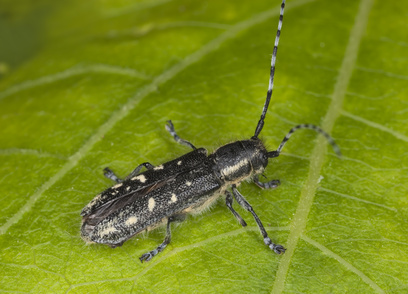 s from traveling through the tree.
s from traveling through the tree.
An infestation can be identified by large holes in and sawdust at the base of your tree. Yet, often times it can be too late to save a tree once it is infested.
Treatment – Insecticides can kill insect borers but are not always very effective. The best way to avoid an infestation is to keep your plants and trees healthy.
Insect borers and many other pests are attracted to dead and dying wood. If you prune, water, and fertilize your trees, they can naturally fight against insect borer infestation. Make sure to remove any fallen branches and dead wood around your trees that might also attract these pests to your healthy plants.
Preventing Insect Infection
There are many different harmful bugs that can infest your trees and garden. But the key to preventing general insect infestation is keeping your plants healthy. A healthy garden harbors a diverse population of beneficial bugs. Many of which eat and destroy the common insect pests we discussed in this post.
 Keeping your plants watered, fertilized, pruned, and mulched can help maintain your yards natural defenses against invading insects.
Keeping your plants watered, fertilized, pruned, and mulched can help maintain your yards natural defenses against invading insects.
But, If you find an infestation in your yard that is out of your control, don’t hesitate to call a professional. The experts at Northwest Arbor Culture Inc. are not only arborists, but master gardeners, as well. We know how to control any infestation and can help you salvage your plants and trees. Before it’s too late.
Have you ever had a insect infestation in your yard? Let us know the methods you used and the challenges you experienced in the comments section.
Friday, May 9th, 2014
Getting To The Root Of The Problem
The taste of a fresh apple picked right off the branch in your back yard. The fragrance of cherry blossoms in full bloom. Relaxing 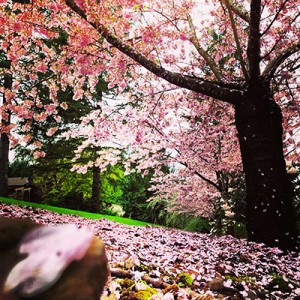 with a loved one in the shade of your weeping willow.
with a loved one in the shade of your weeping willow.
Trees are a big part of our lives, especially here in the Pacific Northwest. We have a special place in our hearts for forests and the beauty that trees bring to our cityscapes.
But there can be a costly side to all of that greenery. If not planned and planted properly, tree roots can cause extensive damage to sewers, sidewalks, foundations, and landscapes in general.
Read this post to learn why trees cause so much damage to our homes and what you can do to prevent costly repairs and removals on your property.
Beneath the Surface
Roots are the foundation of a tree. Providing crucial support, water, and nutrients that a tree needs to survive. But because they are underground, many people don’t consider how widespread and deep roots travel when planting near their homes.
Picture the tallest tree in your yard.
Now imagine that the roots spreading from it are twice as long as the height of the tree.
Roots grow in search of water and nutrients and seek out the nearest source. Which can often be your drainage or septic system.
The effect roots have on your landscape and soil are great. Some tree roots can suck upwards of 200 gallons of water a day from the surrounding soil. Causing the soil to dry and contract if not properly watered.
But how can a plant affect something as strong as metal pipes or a concrete foundation?
Slow and Steady
Root growth can cause lots of damage to your home in many different ways. Here are some of the most common problems and what causes them.
Clogged Sewers and Drainage Pipes
Standard drainage pipes have holes in them to allow waste water from your home to seep into the ground. Roots in search for water can easily grow into these holes. Clogging and even completely blocking pipes.
Sidewalks and Cement Slabs
Roots can easily grow in the space under sidewalks and cement patio slabs. When the root matures and thickens, it lifts the cement causing it to strain and crack under the pressure.
Building Foundations
There’s common misconception that roots can penetrate poured concrete foundations and cause damage. In reality, it is the amount of water that roots suck from the soil around a foundation that will cause the soil to dry and contract. This movement of soil causes instability around the foundation and leads to possible damage.
Landscaping
Trees planted in landscape arrangements can quickly grow and force out other smaller bushes and plants. Ruining a carefully planned landscape arrangement and replacing ornamental plants with exposed and gnarled tree roots.
But if roots are so invasive and persistent, how can I ever stop them from damaging my property?
Dealing With The Damage
There are many different products and methods out there to help you unclog drains and destroy root systems.
Plumbers often recommend pouring toxic chemicals down your drain to kill tree roots. Or in some cases, use a long tool called an ‘auger’ that travels down your drain and actually saws away the roots in your sewage system.
These methods are generally only quick fixes and can lead to contaminated soil and sick trees.
Some landscapers will physically cut invasive tree roots and install a metal barrier. Stopping the roots from growing in that direction. This practice can severely damage or kill trees. Possibly causing the tree to be unstable and susceptible to blowing over in heavy winds.
But how can you avoid all of these expensive and time consuming procedures?
“An Ounce of Prevention Is Worth A Pound Of Cure”
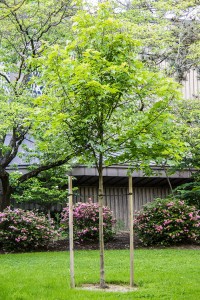 The wisdom of Benjamin Franklin can be applied to many situations including this one. Preventing root damage before it begins is the best alternative to ever dealing with clogged drains and cracking concrete.
The wisdom of Benjamin Franklin can be applied to many situations including this one. Preventing root damage before it begins is the best alternative to ever dealing with clogged drains and cracking concrete.
Taking the time to plan the location and type of tree you plant on your property can save you a lot of time, money, and heartache.
Avoiding species like willows, maples, and aspens can help limit invasive root growth. Also, planting trees at least 10 feet from your foundation, sidewalks, and concrete slabs will help prevent structural damage and concrete cracking in the future.
Hire A Professional
When you hire a skilled, Certified Arborist you will benefit from their training and wisdom.
The experts at Northwest Arbor Culture Inc. have over 30 years of landscaping and tree care experience. We will help you plan and plant your trees so that you get the most out of your landscape while keeping you and your home safe.
Give us a call today at (503) 538-8733 to learn how we can help you with all of your landscaping and tree care needs across the Pacific Northwest.
Are tree roots damaging your home or landscape? Tell us your tree root stories in the ‘comments section’ below.
Friday, April 25th, 2014
TIMBERRR!
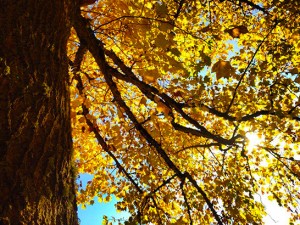 We’ve all wanted to channel our inner lumberjack and chop down a tree. The ponderosa that’s been blocking your view of the mountains is begging to be taken out.
We’ve all wanted to channel our inner lumberjack and chop down a tree. The ponderosa that’s been blocking your view of the mountains is begging to be taken out.
How hard could it really be?
Just grab your chainsaw and a buddy. You’ll be rid of that tree in no time.
Well, we’re here to tell you that’s just the sort of thinking that can get you seriously injured or even killed. An average of 80 people die in the United States each year due to tree care accidents. Countless others are injured.
This post will highlight some of the most common mistakes people make when trimming and chopping down trees.
We hope after reading this you will see the overwhelming advantages to hiring a professional tree service like Northwest Arbor-Culture Inc. for all your tree care needs.
Power Line Problems:
Heavy storms and powerful winds can cause trees to fall or lean against nearby power lines.
Many homeowners make the mistake of attempting to trim or drop trees away from the line hoping that they can prevent a tree or dead branch from falling on their home or car.
Power lines are not something to mess with. According to Preservation Tree, an electrical arc from a power line contains 25,000 watts of power reaching 2000 degrees F.
That’s a lot of power!
You should never touch a power line or any tree touching a power line. Even getting close to downed lines can be dangerous.
Power can travel from the downed line and through the ground, electrifying the area around it. One person died when he touched chipper 20 feet away from the source of the electricity.
Always call a city electrical official or a professional arborist when you notice a downed power line or fallen tree. Never attempt to fix electrical problems on your own.
Risky Heights:
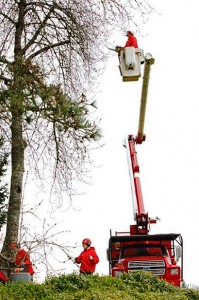 Many DIY tree trimmers run serious risks when they climb trees and ladders. Even falling from a small height can cause serious injury or death.
Many DIY tree trimmers run serious risks when they climb trees and ladders. Even falling from a small height can cause serious injury or death.
People can be hurt when a supporting branch breaks and causes them to fall the ground. Also, human error often causes safety equipment to fail.
One man, who had accidentally cut through his safety line while sawing a branch, fell 50 feet to his death after leaning back to take a rest.
If you think a ladder will solve your height problems, reconsider. Ladders can be very unstable. It is easy to slip and fall from a ladder if you are stretching and straining while working at a high height. Using a chainsaw or power tools from a ladder is enough to make even a professional cringe.
That’s why experts often use bucket lifts to allow them to access even the tallest of branches in a safe way.
Avoid risky heights and dangerous drops. Let a professional Arborist with the proper tools help you trim your tall branches.
Chainsaw Injuries:
Sure, it looks easy to fire up a chainsaw and hack away at a tree trunk. But, there is a lot more to it than meets the eye.
Chainsaws are very powerful and dangerous tools. They can be very unpredictable and even the slightest contact with a moving 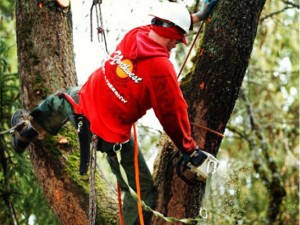 chain can cause serious injury or death.
chain can cause serious injury or death.
Inexperienced operators most commonly are injured because of incorrectly cutting in to a piece of wood, allowing the tip of the bar to be pinched causing ‘kickback’. In blink of an eye the saw kicks back and rapidly lunges back towards the operator. Kickback is the leading cause of chainsaw injury.
36,000 people are injured in chainsaw accidents every year. Don’t be one of them.
Contact a professional arborist and make sure you don’t become another safety statistic.
Falling Trees:
Finally, one of the most obvious dangers of cutting down a tree is the risk of the tree falling on you or someone else.
Trees contain a huge amount of water, foliage and wood weight that can crush homes and vehicles. A ¾ inch diameter branch 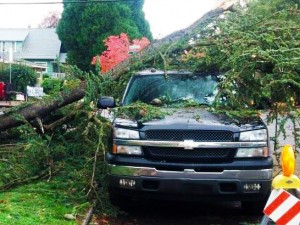 falling from a tree can cause serious injury and death.
falling from a tree can cause serious injury and death.
When felling a tree, the angle of your cut can usually determine the direction the
tree will fall. But, factors like wind, slope, wood-rot, and nearby trees can cause a
tree to fall in unwanted directions.
Also, a common phenomenon known as ‘barber chair’ happens when a tree splits and violently kicks back before it is completely cut.
Trees are large and powerful objects. If not cared for properly trees can become a liability instead of an asset to your property.
Our 30 years of professional knowledge and experience ensures that we get the job done right and within your budget.
The staff Northwest Arbor-Culture Inc. continuously exceed industry standards of excellence and upholds our philosophy of preservation, safety, and aesthetic enhancement.
Contact a Professional: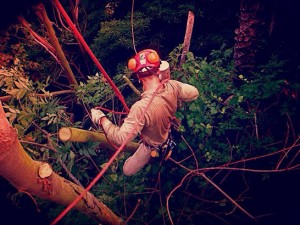
Many things can go wrong when trimming and cutting down trees. It takes a true expert to safely remove a tree.
Make sure that you asses the risks involved with tree trimming and removal before you consider beginning any tree care project. Hopefully you will see that it is always better to call in a professional service like Northwest Arbor-Culture Inc. to safely provide any tree care services that you need.
Have you ever attempted to trim trees on your own? Let us know what tree trimming challenges you’ve had in the ‘comments section’.
Wednesday, April 9th, 2014
It’s time for tea, and we’re not talking about chamomile.
Compost tea is a healthy drink for your plants or lawn. It can be a great way to spruce up any parts of your yard that are looking a 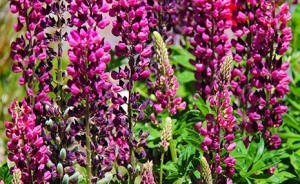 little sad. In this guide, we reveal some of our expert compost tea tips that will make your garden healthy and your neighbors jealous.
little sad. In this guide, we reveal some of our expert compost tea tips that will make your garden healthy and your neighbors jealous.
Arborists know that adding compost to soil can increase the minerals and nutrients available to your plants. This is like plant food – it helps your plants grow big and strong. Compost also contains bacteria and fungi that help protect plants from disease and infection.
But compost can be arduous to spread. Sometimes what seems like a large amount can be surprisingly little – not enough to give your plants the nutrients they need.
That’s where ‘compost tea’ comes into the mix.
Making compost tea is simple. The process is very similar to making actual tea. You can spread it over large areas, covering plants with microorganisms that fight the spread of plant diseases and improve the health of your plants.
What is ‘Compost Tea’?
“Compost tea is a liquid extract of compost that contains plant growth compounds and beneficial microorganisms.”
(OSU Extensions Services)
Agriculturists have used liquid extracts and fertilizers for hundreds of years. Solid compost is a great source of beneficial nutrients, but you can only mix it with the soil. This forces the plant to create its own ‘protective barrier’ of microorganisms on its foliage.
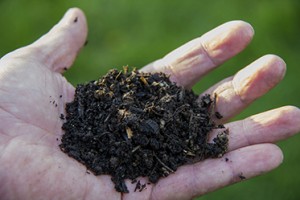 Compost is also difficult to spread over large areas. For the homeowner wanting to fertilize their lawn or trees, it isn’t always the best choice.
Compost is also difficult to spread over large areas. For the homeowner wanting to fertilize their lawn or trees, it isn’t always the best choice.
Compost tea is the solution to these problems. It allows agriculturists to take the best parts from compost and put them in liquid form. You can easily spray that liquid over an entire plant or lawn.
Generally speaking, there are two types of compost tea: aerated and non-aerated. While we want you to become a compost tea expert, we’re going to take baby steps.
Making aerated compost tea gets complicated (and expensive). For the sake of learning, this post will focus on the simplest method of making compost tea.
Making Farmer’s Tea (Non-aerated Compost Tea)
The process of making Farmer’s Tea resembles that of brewing actual tea. Like the name implies, you make non-aerated compost tea by ‘steeping’ or soaking compost in water.
While your compost is soaking, you’ll need to stir and agitate it by hand. This introduces air into the mixture, allowing colonies of good bacteria, fungi, and yeast to grow in the liquid.
Once the water is saturated with beneficial nutrients and fermented with microorganisms, you want to strain it into a spraying device and apply it to your plants.
That’s an overview of the whole process – start to finish. Now we’ll cover each step in more detail.
Materials Needed
You can pick up all these materials at your local nursery or garden shop.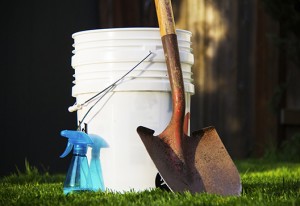
- Two 5 gallon buckets
- Water source (not chlorinated) *
- Ready-to-use compost (organic and not entirely manure-based) **
- Stick or tool for stirring
- Burlap sack or a large knit cloth bag
- Handheld spray bottle or garden sprayer for application
* Do not use chlorinated water. It will kill the organisms in your tea and contaminate your plants.
** The most important ingredient in your compost tea is the compost. Quality compost contains thriving colonies of microorganisms and helpful plant nutrients. If you start with quality compost, you’ll make a quali-TEA. That is, a quality tea.
Avoid using animal manure compost. These composts don’t contain the same amount of microbial colonies as organic compost. It can also contain E-Coli and other harmful human pathogens.
Step 1
Make sure that your equipment is clean and free of contaminants like pesticides and chemicals. These can kill helpful microorganisms and contaminate your plants.
Step 2
Fill your bucket about half full of compost.
Step 3
Pour water on top of the compost until the bucket is nearly full to the top with water.
Step 4
Let your compost soak in the bucket for at least one day. Some people like to brew their tea for an entire month, but one to eight days is a sufficient amount of time.
You should agitate the mixture with your stirring tool at least twice a day. Stirring introduces oxygen into your liquid and helps bring nutrients into solution. The more often you stir your fermenting tea, the quicker and stronger the beneficial microorganism colonies should grow in your tea.
Note: If you are brewing your tea on a hot day, make sure that you are stirring more often (once an hour). You also want to keep your mixture out of direct sunlight and harmful UV rays.
Step 5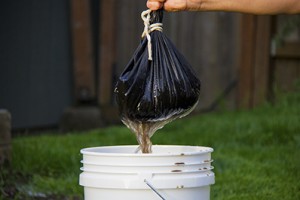
Once your tea has been brewed you should strain the particles out of the solution. For this part of the process, you’ll use your burlap sack or any type of large knit cheesecloth-like material.
Pour the mixture through the cloth into the second 5 gallon bucket. You can reuse the separated compost particles as a soil amender, or throw them into a compost pile.
Using Your Compost Tea
Now that you have successfully brewed and strained your batch of compost tea, you should be left with a particle free, amber colored liquid. If your liquid is very dark, it may be too concentrated and can be diluted by adding extra water until a lighter color is achieved.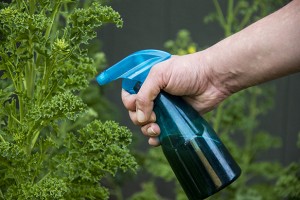
Fill your clean handheld spray bottle or garden sprayer with compost tea and water. A general guide to tea dilution is as follows:
- For house plants use a 1:1 (tea to water ratio)
- For larger areas like lawns or trees use a 1:3 (tea to water ratio)
As you begin applying your protective brew teaming with microorganisms to your plants observe the health of the plant to guide how much tea you spray. Sick plants will generally need larger amounts of tea than healthy plants.
When Should You Spray? And How Much?
Whenever you see signs of disease or undernourishment these are good indicators that your plants may need a dose of compost tea.
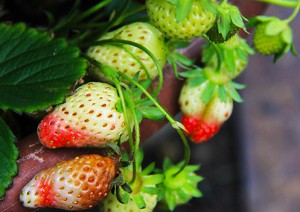 Undernourished plants may have yellowing leaves, stunted growth and smaller than normal flowers or fruits. Signs of a fungal disease include wilting foliage, failure to flower or bear fruit, and discolored leaves. Pest problems and other diseases produce many of these symptoms as well.
Undernourished plants may have yellowing leaves, stunted growth and smaller than normal flowers or fruits. Signs of a fungal disease include wilting foliage, failure to flower or bear fruit, and discolored leaves. Pest problems and other diseases produce many of these symptoms as well.
To use your compost tea, you can spray it on plant foliage (leaves), spray or soak the soil around a plant, or even treat seedlings by dipping their roots into compost tea before planting them.
Medium houseplants require about 2 cups of tea each treatment. For lawns apply tea once or twice a month during growing season, just before or just after regular watering. One gallon of compost tea mixture covers about 1,000 square feet.
If you are seeing signs of disease or undernourishment spray at least once a month, or as often as every other week. If you have healthy plants, spraying once or twice a season can still be beneficial.
Note: Do not spray your plants in direct sunlight or excessive heat. UV rays and extreme temperatures can damage your compost tea.
You may not see immediate changes in your plant health, but be patient. It takes some time for the beneficial microorganisms to grow and proliferate around and on the plant.
Storing Compost Tea
You can only keep and use compost tea for several days after decanting from the original brew.
Compost tea does not keep well for long periods of time because the living microorganisms in the solution will quickly ‘eat’ all of the available food and eventually die. By storing compost tea properly, you can help it stay ‘good’ for several days after decanting.
Store compost tea away from direct sunlight and harmful UV rays. Also, make sure to keep your tea away from extreme temperatures (between 60-90 degrees F).
Do not store your brew in a closed container. Natural biological and chemical reactions can create pressure and cause a sealed container to burst.
Cautions With Compost Tea
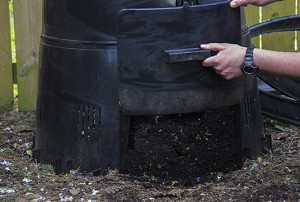 Do not apply compost tea to any vegetable within 3 weeks of the planned harvest date. Compost tea can contain some human pathogens and should not be ingested or introduced into the body.
Do not apply compost tea to any vegetable within 3 weeks of the planned harvest date. Compost tea can contain some human pathogens and should not be ingested or introduced into the body.
Also, not fully matured compost can contain E. coli. Make sure your compost is fully broken down to help ensure that no unwanted pathogens are introduced into your compost tea.
Creating quality, fully matured compost is a very complex subject that we will explore in a different post. Until then, here is a link to making quality compost.
Beautiful Blooms & Green Gardens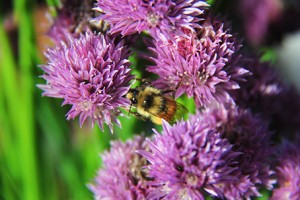
Now that you know how to brew amazing compost tea and properly spray your struggling plants, all you have left to do is sit back and enjoy the fruits of your labor.
Soon you will have jealous neighbors complimenting your gardening prowess and begging for your growing secrets.
Have you ever made compost tea before? We’d love to hear about your personal tea recipes and success stories in the comments section.
Sources:
 Yet there are several simple steps that you can take to prepare your home and property to withstand raging wildfires. Careful planning and yearly maintenance could mean the difference between a singed yard and a completely destroyed home and property.
Yet there are several simple steps that you can take to prepare your home and property to withstand raging wildfires. Careful planning and yearly maintenance could mean the difference between a singed yard and a completely destroyed home and property.







 One easy step you can take to keep your trees healthy and looking sharp is to mulch around the base of your trees.
One easy step you can take to keep your trees healthy and looking sharp is to mulch around the base of your trees.
 tree would create in the forest. Leaves can be chopped or ground down and watered to pack them into a neater looking mulch that won’t blow away.
tree would create in the forest. Leaves can be chopped or ground down and watered to pack them into a neater looking mulch that won’t blow away. When piling the mulch under the tree, make sure that the mulch layer is only two to four inches thick. Any thicker and you risk limiting the oxygen and nutrient flow to the roots of the tree.
When piling the mulch under the tree, make sure that the mulch layer is only two to four inches thick. Any thicker and you risk limiting the oxygen and nutrient flow to the roots of the tree.


 You can always look directly on the
You can always look directly on the  While bugs can be beneficial to our fruit trees and gardens, there are also many critters that can cause extensive damage and death to your plants.
While bugs can be beneficial to our fruit trees and gardens, there are also many critters that can cause extensive damage and death to your plants. (10-14 days) and a population can explode in no time.
(10-14 days) and a population can explode in no time. s from traveling through the tree.
s from traveling through the tree. Keeping your plants watered, fertilized,
Keeping your plants watered, fertilized,  with a loved one in the shade of your weeping willow.
with a loved one in the shade of your weeping willow.

 The wisdom of Benjamin Franklin can be applied to many situations including this one. Preventing root damage before it begins is the best alternative to ever dealing with clogged drains and cracking concrete.
The wisdom of Benjamin Franklin can be applied to many situations including this one. Preventing root damage before it begins is the best alternative to ever dealing with clogged drains and cracking concrete. We’ve all wanted to channel our inner lumberjack and chop down a tree. The ponderosa that’s been blocking your view of the mountains is begging to be taken out.
We’ve all wanted to channel our inner lumberjack and chop down a tree. The ponderosa that’s been blocking your view of the mountains is begging to be taken out. Many DIY tree trimmers run serious risks when they climb trees and ladders. Even falling from a small height can cause serious injury or death.
Many DIY tree trimmers run serious risks when they climb trees and ladders. Even falling from a small height can cause serious injury or death. chain can cause serious injury or death.
chain can cause serious injury or death. falling from a tree can cause serious injury and death.
falling from a tree can cause serious injury and death.
 little sad. In this guide, we reveal some of our expert compost tea tips that will make your garden healthy and your neighbors jealous.
little sad. In this guide, we reveal some of our expert compost tea tips that will make your garden healthy and your neighbors jealous. Compost is also difficult to spread over large areas. For the homeowner wanting to fertilize their lawn or trees, it isn’t always the best choice.
Compost is also difficult to spread over large areas. For the homeowner wanting to fertilize their lawn or trees, it isn’t always the best choice.


 Undernourished plants may have yellowing leaves, stunted growth and smaller than normal flowers or fruits. Signs of a fungal disease include wilting foliage, failure to flower or bear fruit, and discolored leaves. Pest problems and other diseases produce many of these symptoms as well.
Undernourished plants may have yellowing leaves, stunted growth and smaller than normal flowers or fruits. Signs of a fungal disease include wilting foliage, failure to flower or bear fruit, and discolored leaves. Pest problems and other diseases produce many of these symptoms as well. Do not apply compost tea to any vegetable within 3 weeks of the planned harvest date. Compost tea can contain some human pathogens and should not be ingested or introduced into the body.
Do not apply compost tea to any vegetable within 3 weeks of the planned harvest date. Compost tea can contain some human pathogens and should not be ingested or introduced into the body.

